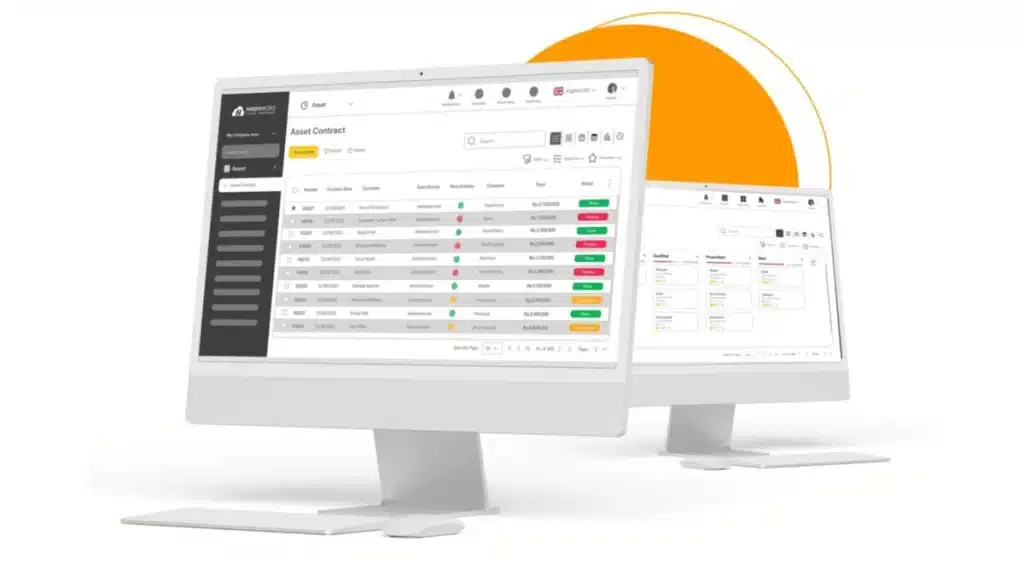In today’s fast-paced business environment, understanding physical asset management has become essential for companies. Many companies struggle with maintaining their equipment and facilities, leading to costly breakdowns and inefficiencies.
What would happen if your machinery failed unexpectedly, halting production and impacting your bottom line? The fear of lost revenue and decreased productivity looms large, emphasizing the need for a solid asset management strategy.
This article will explain the fundamentals of physical asset management, such as what is physical asset management, and provide insights into practical strategies that can transform your approach.
Sumisid tayo at tuklasin kung paano protektahan at i-optimize ang mahahalagang asset ng iyong organisasyon.
Table of Contents
Key Takeaways
|
What is Physical Asset Management?
Physical asset management is the systematic approach of overseeing a company’s physical assets throughout their lifecycle. The primary goal is to maximize the value of these assets while minimizing costs and risks.
Companies can ensure that assets are used efficiently and effectively by employing planning, monitoring, and optimization strategies.
One critical component of physical asset management is asset tracking, which involves keeping accurate records of each asset’s location, condition, and performance metrics.
Moreover, effective physical asset management involves compliance with regulatory standards and sustainability practices. Companies must ensure their assets function optimally and adhere to legal and environmental requirements.
Examples of Physical Asset Management
Effective physical asset management is crucial across various industries, helping ensure smooth and efficient operations. Here are examples of how physical asset management is applied in different sectors.
1. Manufacturing
Effective physical asset management is crucial for the smooth operation of machinery and production lines in a manufacturing environment.
One of the primary activities involved is establishing regular maintenance schedules, which helps prevent unexpected breakdowns and ensures that production processes remain uninterrupted.
Additionally, investing in new technology can significantly enhance operational efficiency and productivity, allowing manufacturers to stay competitive.
Another critical aspect is replacement planning; as equipment ages, a strategy for timely replacement is essential to maintain production capabilities and avoid costly downtime.
2. Transportation
In transportation, effective physical asset management is vital for the successful operation of vehicle fleets. Condition tracking is an essential practice, as monitoring the state of each vehicle enables timely maintenance and repairs, thereby preventing service disruptions.
Scheduled maintenance plays a key role in minimizing downtime and extending the lifespan of vehicles, which is crucial for maintaining operational efficiency.
Furthermore, route optimization, facilitated by technology, helps reduce fuel consumption and improves delivery performance.
3. Real estate
Physical asset management is fundamental to effectively overseeing various real estate properties. Regular inspections are a key component, as they help identify maintenance needs before they escalate into larger issues, ensuring properties remain in good condition.
Additionally, capital improvement planning allows for strategic upgrades or renovations that can enhance property value.
Implementing effective physical asset management in real estate ultimately leads to better property oversight and increased profitability, benefiting management companies and their clients.
4. Energy
Physical asset management is essential in the energy sector to maintain the integrity and efficiency of facilities such as wind farms.
One key component of this process is performance monitoring to ensure compliance with operational standards and regulations.
Adhering to regulatory compliance is critical for sustainable operations, particularly in an industry closely scrutinized for its environmental impact.
Moreover, decommissioning planning becomes necessary as facilities age; strategizing the retirement or decommissioning of outdated equipment helps manage risks and associated costs effectively.
5. Healthcare
Implementing effective physical asset management strategies in healthcare settings is vital for ensuring that medical equipment is safe and effective.
Maintenance and calibration of life-saving devices are essential, as regular servicing guarantees their functionality when needed most.
Inventory management is another crucial aspect, enabling hospitals to keep track of medical equipment and avoid shortages or overstock situations that could hinder operations.
Additionally, planning for technology upgrades ensures that healthcare facilities remain at the forefront of technological advancements, ultimately enhancing patient care.
Two types of Asset Management
Enterprise asset management can be categorized into two main approaches, each with its strategies and implications. Understanding these types helps investors make informed decisions that align with their financial goals and market conditions.
1. Reactive Asset Management
Reactive asset management involves responding to market events and changes as they happen.
While this approach can help mitigate short-term risks, it may lead to missed growth opportunities, and emotional reactions can influence decisions, resulting in higher transaction costs.
2. Proactive Asset Management
Proactive asset management focuses on planning and anticipating market changes before they occur. Managers conduct in-depth research to predict trends and investment opportunities, enabling them to make more strategic decisions.
This approach aims to create a resilient portfolio that can withstand market fluctuations and capitalize on future growth potential.
Benefits of Physical Asset Management

Physical asset management refers to the systematic process of maintaining, upgrading, and disposing of physical assets to maximize their value and minimize costs. Here are some key benefits of physical asset management:
1. Improved Asset Tracking
A physical asset management system enables organizations to track their assets in real time. With an integration such as blockchain physical asset management, each asset can be assigned a unique digital identifier that securely logs its history, ownership, and location.
2. Enhanced Security and Integrity
Blockchain technology provides a secure, tamper-proof way to record asset information. Each transaction related to a physical asset is encrypted and linked to the previous one, creating an immutable ledger.
This enhances the integrity of asset data and protects against fraud or unauthorized access, ensuring that organizations can rely on accurate information for decision-making.
3. Streamlined Processes
A physical asset management system can automate various processes, such as maintenance scheduling and inventory management.
With blockchain, these processes can be further streamlined, enabling smart contracts that automatically trigger actions based on predefined conditions.
4. Cost Reduction
Effective physical asset management optimizes maintenance schedules and extends asset life, yielding significant company cost savings. By managing assets efficiently, companies can minimize downtime and reduce operational expenses.
5. Better Compliance and Reporting
A robust asset management system enhances compliance with industry regulations by providing an auditable trail of asset transactions. This simplifies reporting processes, making it easier for companies to demonstrate adherence to regulatory requirements.
Strategies for Effective Physical Asset Management

Effective physical asset management is crucial for organizations seeking to maximize the value of their resources while minimizing costs and risks. Several key strategies can be employed for effective physical asset management:
1. Asset Identification and Classification
Effective physical asset management begins with accurately identifying and classifying all company assets. This involves cataloging each asset based on its type, function, and location.
By maintaining a detailed inventory, the company can better understand what they own, the condition of each asset, and how these assets align with strategic objectives.
A robust classification system also aids in prioritizing maintenance and replacement decisions, ensuring that critical assets receive the necessary attention to maximize their lifespan and operational efficiency.
2. Lifecycle Management
Managing the entire lifecycle of assets—from acquisition to disposal—is crucial for optimizing performance and minimizing costs. This strategy encompasses planning for the initial procurement, maintenance, and eventual decommissioning of assets.
By implementing a lifecycle approach, companies can forecast expenses, schedule timely maintenance, and identify opportunities for upgrades or replacements.
3. Regular Maintenance and Inspections
A regular maintenance schedule helps identify potential issues before they escalate into major problems, reducing downtime and repair costs.
Inspections should be comprehensive and tailored to each asset’s specific needs. Predictive maintenance techniques can enhance this process by enabling companies to anticipate failures based on usage patterns and historical performance data.
4. Data-Driven Decision Making
Leveraging data analytics is essential for informed decision-making in asset management. Organizations can gain insights into trends and patterns that inform strategic decisions by collecting and analyzing data on asset performance, maintenance history, and operational metrics.
Additionally, asset management software can centralize data, streamline reporting processes, and improve communication across departments, enhancing overall operational efficiency and responsiveness.
Searching for the best asset management software? Trust HashMicro to deliver. Our features will make your asset management more efficient and effective.
Gustong malaman ang higit pa? Makipag-ugnayan sa amin ngayon!
Optimize Your Asset Management with HashMicro Solutions

HashMicro offers a powerful solution for optimizing asset management, enabling organizations to streamline processes and enhance efficiency.
Businesses can gain complete asset visibility by leveraging advanced features such as real-time tracking and automated reporting.
Furthermore, the software integrates seamlessly with other business systems, allowing for a more cohesive approach to asset management that supports overall operational goals.
In addition, HashMicro’s customizable dashboards and analytics tools empower users to analyze asset performance effectively. This capability helps organizations identify underperforming assets and allocate resources more strategically, ultimately leading to cost savings and improved ROI.
Features
- Asset Comprehensive Cost Reporting: Provides reports that serve as a basis for future asset maintenance cost planning.
- Asset Maintenance Budget: Ensures adherence to established budgets, optimizes resource allocation, avoids unexpected costs, and extends the overall lifespan of assets.
- Preventive Maintenance Scheduling: Easily creates maintenance schedules to prevent unexpected operational disruptions, ensuring all assets remain functional and extend their lifespan.
- Asset Stock Take with Barcode: Reports asset status (breakdown, operational, missing, found, etc.) into the system using barcodes.
- Asset GPS Tracking: Accurately and in real-time, asset locations are tracked using GPS, enhancing the visibility of company assets.
- Parent & Child Asset Management: Provides information on each asset individually or in a broader hierarchical context for efficient and detailed monitoring of maintenance, usage, and asset status tracking.
- QR Code Scanning for Facilities Request: Facilitates employees in reporting issues and accelerates the repair process.

Conclusion
In conclusion, effective physical asset management is crucial for companies in today’s competitive business landscape. Businesses can maximize value, minimize costs, and mitigate risks by systematically overseeing physical assets throughout their lifecycle.
Accurate asset tracking, regular maintenance, and data-driven decision-making are essential strategies that help prevent costly breakdowns and improve operational efficiency.
With HashMicro Asset Management, you can optimize your asset management processes more effectively through various advanced features. One key benefit is the real-time tracking of assets, allowing you to monitor their location and condition at any moment.
Huwag palampasin ang pagkakataong maranasan ang hindi kapani-paniwalang mga benepisyo ng aming mga feature—subukan ang aming libreng demo ngayon!

FAQ
-
What is physical asset management?
Physical asset management is the systematic process of maintaining, upgrading, and disposing of physical assets to maximize their value and minimize costs. It involves strategies for tracking and optimizing asset performance throughout their lifecycle.
-
What is an example of a physical asset?
An example of a physical asset is machinery used in manufacturing, such as a conveyor belt or robotic arm. Other examples include vehicles, buildings, and equipment.
-
What is the physical asset management plan?
A physical asset management plan outlines strategies for managing a company’s physical assets effectively over their lifecycle. It includes processes for maintenance, monitoring, and optimizing asset performance to achieve organizational goals.




































